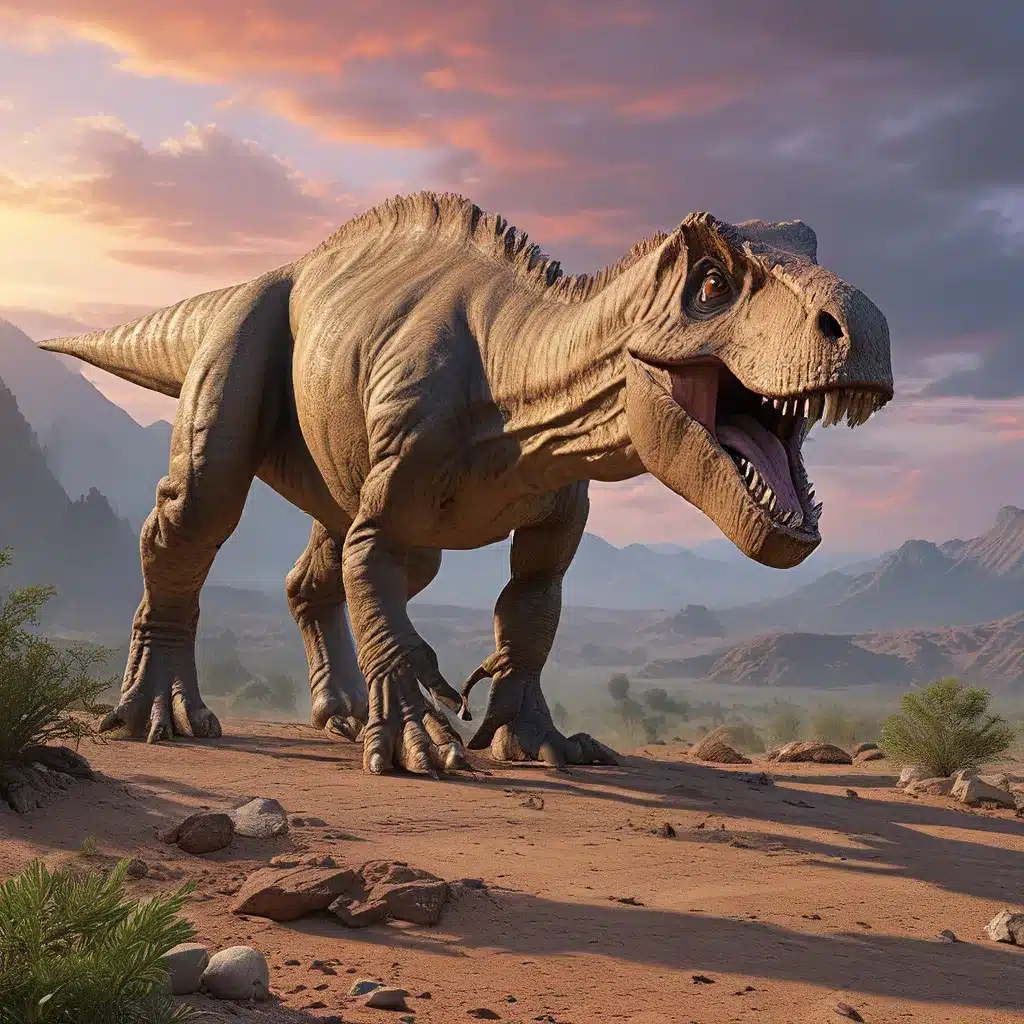
The Permian Mass Extinction: The Catalyst for Dinosaur Dominance
The dawn of the Mesozoic Era, also known as the “Age of Reptiles,” began with a cataclysmic event that forever altered the course of life on Earth. Around 252 million years ago, the Permian mass extinction, dubbed the “Great Dying,” wiped out more than 90% of all marine species and 70% of terrestrial vertebrates. This devastating event left the planet’s ecosystems in ruins, paving the way for the rise of a new dominant group of animals – the dinosaurs.
In the aftermath of this calamity, the mammal-like reptiles that had previously ruled the land began to decline, while a group of archosaurs, including the earliest dinosaurs, started to emerge and diversify. The Triassic Period, which spanned from 252 to 201 million years ago, witnessed the gradual recovery of life on Earth and the dawn of the Age of Dinosaurs.
Triassic Exploration: Uncovering the Earliest Dinosaurs
The Triassic Period was a time of great uncertainty and change, as the planet’s landmasses were still united in the supercontinent of Pangea. The Early Triassic world was largely a hot, arid desert environment, with low oxygen levels and rampant volcanic activity. Despite these challenging conditions, some hardy species managed to survive, including the crocodile-like Proterosuchus and the herbivorous Lystrosaurus.
It was during the Late Triassic, around 230 million years ago, that the first true dinosaurs began to emerge. One of the earliest known dinosaurs is Eoraptor, a small, slender, bipedal predator that was about the size of a domestic cat. While the exact origins of dinosaurs remain a subject of ongoing debate, the appearance of Eoraptor and other early dinosaurs marked the beginning of their rise to dominance.
Recent discoveries have pushed back the timeline of dinosaur origins, with the discovery of Nyasasaurus and Mbiresaurus raathi in Africa, which may be the earliest known dinosaurs or their close relatives.
The Diversification of Archosaurs and the Emergence of Dinosaurs
As the Triassic Period progressed, the archosaurs, a group that included crocodiles, pterosaurs, and the earliest dinosaurs, began to diversify and radiate into a wide range of ecological niches. The Late Triassic saw the rise of fearsome apex predators like the rauisuchia and phytosaurs, which kept the first dinosaurs in check for millions of years.
However, the dinosaurs were not to be denied. During this time, the two main taxonomic orders of dinosaurs, Saurischia (lizard-hipped) and Ornithischia (bird-hipped), started to emerge and diversify. Among the earliest saurischian dinosaurs were the herrerasaurids, fierce carnivores that could grow up to 20 feet (6 meters) in length.
The sauropodomorphs, the ancestors of the iconic long-necked sauropods, such as Diplodocus and Brontosaurus, also appeared during the Late Triassic. These massive herbivores, represented by species like Plateosaurus, which could reach lengths of up to 33 feet (10 meters), laid the foundations for the dominance of the sauropods in the subsequent Jurassic Period.
The Rise of Mammals and the Ongoing Reign of Dinosaurs
While the dinosaurs were establishing their foothold on the land, another group of synapsids, the ancestors of modern mammals, were also making their mark. The early mammaliaforms, such as the shrew-like Megazostrodon, were cornered into specific niches by the more successful archosaurs. However, these small, furry creatures would eventually have their day, as the extinction of the non-avian dinosaurs would pave the way for the rise of mammals.
By the end of the Triassic, the Age of Dinosaurs was well underway, and the reptilian giants continued to diversify. Meanwhile, the ichthyosaurs and plesiosaurs ruled the oceans, which had once again become abundant with oxygen and teeming with life. The stage was set for the Jurassic Period, a time when the dinosaurs would reach the pinnacle of their evolutionary success and come to dominate the planet like never before.
Ongoing Discoveries and Emerging Theories
As our understanding of the Triassic Period and the dawn of the dinosaurs continues to evolve, new discoveries and theories are constantly emerging. The recent finds of Nyasasaurus and Mbiresaurus raathi in Africa have challenged the long-held belief about the origins of dinosaurs, pushing back the timeline and expanding our knowledge of this critical period in Earth’s history.
Ongoing research into the Triassic environment, the mass extinction events, and the evolutionary adaptations of early archosaurs and mammaliaforms continues to shed light on the complex web of life that existed during this time. As scientists uncover more fossils and explore new techniques for analyzing them, the story of the Triassic Titans and the rise of the dinosaurs is sure to become even more captivating.
The Lost Kingdoms website is dedicated to exploring the mysteries of ancient civilizations and the fascinating world of paleontology. Stay tuned for more insights and discoveries about the Triassic Period and the dawn of the Age of Dinosaurs.


